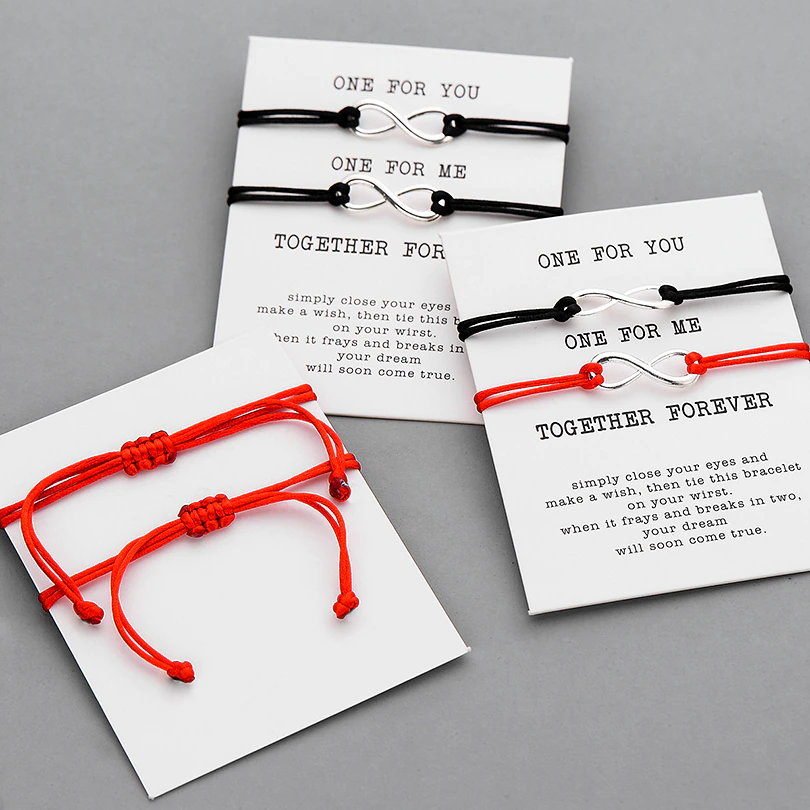Centric vascular bundle of Selaginella stem and F. Radial vascular bundle Of Vanda root. CONTENTS. In this video, Dr. Shanty Paul explains about vascular tissue system and different types of vascular bundles in detail, using simple animations. In this study, three natural populations of … 1 0 Respect 0 Comments 0. C and D are from the tap root of Vicia faba.” -Stevens, 1916. Types of vascular bundles: “C, a portion of the radial type, shown complete in D, where the part outlined at a, corresponds to C. Corresponding parts are lettered the same in both figures; c, xylem; b, phloem; f, cambium ring; e, pericycle; d, endodermis. These bundles are the characteristic of roots. Same radius. A. Conjoint . Differentiate collateral and bicollateral vascular bundles. C. Xylem outside and phloem inside. Radial vascular bundle b. Polyarch xylem c. Well developed pith Solution: (a) Radial Vascular bundle is present in roots. Concentric. 9. In radial vascular bundle, the xylem and phloem bundles lie separately on different radii and alternate with each other. NEET Biology Anatomy Of Flowering Plants MCQs Set A with answers available in Pdf for free download. Page: Print We measured the distance between 1-2 and 3-4 portals and radial vascular bundle and the nearest branch of the superficial branch of radial nerve (SBRN). The different types of vascular bundles met within plants are: 1. A. A- Radial, B- Collateral Closed, C- Collateral Open, D- Bicollateral. Solution: The vascular tissue of the root is characterised by radial arrangement of vascular bundles z.e., xylem and phloem occur in separate patches on alternate radii. C) Stem done clear. The radial variation in the cell proportions could be caused by the radial variations in vascular bundle density. 1) radial vascular bundles - the xylem and phloem are arranged separately along different radii. Tissues in Plants. A. In the given figures A, B and C the types of vascular bundles are respectively radial, conjoint closed and conjoint open. Radial vascular bundle: Xylem and phloem strands are separated from each other by non-vascular tissue. Ans: Bulliform/motor cells. D. Phloem outside and xylem inside. They have conjunctive parenchyma cells instead. 2. B. A- Collateral Closed, B- Radial, C- Collateral Open, D- Bicollateral. 4. What are the components of vascular bundles? Vascular tissue remains divided into many smaller groups due to the presence of broad medullary rays. Radial vascular bundles are found in monocotyledonous roots. In this observation, Begonia that has the largest total area of vascular bundles is B. acetosa (179,833.827 µm 2 area) and the smallest one is B. cucullata (9,765.794 µm 2 area). (a) Radial Vascular Bundle The xylem and phloem are present on the separate radii of the root. These radial vascular bundles are the characteristic feature of the root of both dicots and monocots. The pons is the largest part of the brainstem, located above the medulla and below the midbrain.It is a group of nerves that function as a connection between the cerebrum and cerebellum (pons is Latin for bridge). Vascular bundles composed of xylem vessels with various sizes and structures would be helpful for vascular plants to maintain hydraulic functions. Since the economic interests and the strong clonality, it has been widely cultivated in southern China, which inevitably reduces the natural stands and leads to gene loss in this species. Optical examination and electrical penetration graph (EPG) recordings suggest that aphids (Megoura viciae) probe the vacuolar sap of cortex cells. They constitute medullary rays. Radial . Those vascular bundles in which xylem and phloem are present on different radii are known as … Transition of radial vascular bundle in root to conjoint vascular bundle in stem occurs in transition zone which is generally hypocotyl. This can be significantly seen at the roots. The interdependence of refilling of discontinuous water columns from radial water influx in both metaxylem and protoxylem vessels was also revealed in this study. Identify the vascular bundle types with the given diagr. Metaxylem elements are oval or circular. Radial vascular bundle: Root b. Polyarch xylem: Monocot root c. Well developed pith: Dicot stem and monocot root. These are characteristics of roots. What are concentric vascular bundles? (i) Radial : Presence of radial vascular bundles is the characteristic feature of roots. Hypocotyl is the part of embryonal axis below the level of cotyledons. Phloem: This tissue is responsible for transporting food and nutrients to the plant. They have xylem and phloem at different radii. E.g., radial vascular bundles is always closed and present in most of the roots. (D) Both Dicot Roots And Monocot Roots. A single vascular bundle is placed medianly (P. wallichiana) and two vascular bundles (P. roxburghii) are placed at an angle (Fig. The endodermis is the central, innermost layer of cortex in land plants.It is a cylinder of compact living cells, the radial walls of which are impregnated with hydrophobic substances (Casparian strip) to restrict apoplastic flow of water to the inside. In this type of vascular bundle, … The radial autograft is taken together with radial vascular bundle, the radial artery is so being excluded from participation in hand and forearm blood flow. Xylem vessels are polygonal in shape. Radial vascular bundle - Xylem and phloem on different radii. A vascular bundle, in which the primary xylem and primary phloem strands are separated from each other by nonvascular tissues and they are situated on alternate radii of an axis, is known as radial vascular bundle or radial bundle. Codes 33517 and 35600 are add-on codes and are modifier 51 exempt. Such vascular bundles are called radial bundles. Ans: Vascular bundles are located within the mesophyll tissue in leaves. Radial vascular bundles are found in monocotyledonous roots. Radial Vascular Bundle. In most cases pith is absent. Radial and ulnar veins. Ans. If present, it occupies a smaller area in the center. These type of vascular bundles are present in dicot and monocot roots. 3. A group of xylem and phloem forms a vascular bundle. The well developed pith is present and it occupies a larger area in the center. (i) Radial: Vascular bundles have xylem and phloem patches arranged separately on alternate radi. Answer and Explanation: 38. B Bicollateral vascular bundle - Phloem present on both sides of xylem. On the basis of one or two vascular bundles of needles, pines have been divided into haploxylon or diploxylon. The frequency and radial (RD) and tangential (TD) diameters of the vascular bundles in the cross section of the bamboo culm were measured. Q.2. Vascular bundles are radial, exarch and show the secondary growth due to the presence of cambium. Please scroll down to see the correct answer and solution guide. 2)Closed vascular bundles do not show secondary growth and are devoid of cambrium. What constitutes the cambial ring? Routine radial access and routine drug-eluting stent implant is the standard of care during primary PCI. Step by step video, text & image solution for " Radial vascular bundle can be seen in " by Biology experts to help you in doubts & scoring excellent marks in Class 11 exams. d . C Amphivasal vascular bundle - Phloem surrounds xylem. Moso bamboo (Phyllostachys edulis (Carriere) J. Houzeau), native to China, is one of the most economically and ecologically important bamboo species. The vascular bundles in leaves become highly branched reducing the distance of most leaf cells to less than a few hundred micrometres from a vessel . d . Once the seedling begins to grow and matures some other structural differences also occur. How vascular bundles originate in plants? (i) Xylem: Xylem and Phloem are present in the form of bundles called vascular bundles. This monthly journal offers comprehensive coverage of new techniques, important developments and innovative ideas in oral and maxillofacial surgery.Practice-applicable articles help develop the methods used to handle dentoalveolar surgery, facial injuries and deformities, TMJ disorders, oral cancer, jaw reconstruction, anesthesia and analgesia.The journal also … The space between the phloem and xylem is filled in with either parenchyma or fibres, or both. Here the xylem and phloem are arranged TOGETHER in the same RADIUS. Bundles more than six. Note: Vascular bundle helps in transporting water and minerals through the special tissue known as vascular tissue. 3. Accordingly vascular bundles are of the following types. Same radius. Radial vascular bundle : Xylem and phloem are arranged in an alternate matter or different radii are called Radial vascular bundle. answered by Lifeeasy Authors. On the basis of number of xylem bundles, the root may be diarch (with two xylem bundles), triarch, tetarch, pentarch and polyarch (with more than five xylem bundles). |. In Cucurbita, the vascular bundles are bicollateral. D Conjoint vascular bundle - Xylem and phloem on same radii. Moreover, we found that xylem-expressed SHR (pTMO5::SHR:GFP) is capable of moving throughout the vascular bundle (Fig. C. Surrounding the axillary artery, three of the four principal branches of the brachial plexus can be seen: the median (superficial and lateral to the artery), the ulnar (superficial and medial to the artery), and the radial (posterior and lateral or medial to the artery) nerves. In radial vascular bundle, xylem and phloem are arranged on different radii. Both these tissues are present in a vascular bundle, which in addition will include supporting and protective tissues. The radial and ulnar veins are deep veins draining the forearm; they unite to form the deep brachial vein, which drains the arm and empties into the axillary vein in the axillary region. 2. Conjoint vascular bundle : Xylem and phloem are arranged in the same radius are called … [C] Vascular [D] All Question No:4 Root hairs are [A] acellular [B] unicellular [C] multicellular [D] multicellular and unicellular Question No:5 Vascular bundles of roots are [A] conjoint [B] concentric [C] bicollateral [D] radial Question No:6 Radial vascular bundle can be seen in [A] leaf [B] dicotroot [C] stem [D] flower Sections below the second cauline leaf confirmed extensive xylogenesis in the vascular bundles originating from the leaves above. Typical vascular bundles are conjoint vascular bundles. Blood vessels function to transport blood.In general, arteries and arterioles transport oxygenated blood from the lungs to the body and its organs, and veins and venules transport deoxygenated blood from the body to the lungs.Blood vessels also circulate blood throughout the circulatory system Oxygen (bound to hemoglobin in red blood cells) is the most critical nutrient carried by … B. Alternate radii. In the centre, they have a parenchymatous cell called pith, which is small and inconspicuous in dicot root and large and well developed in monocot root. related to an answer for: Example of radial vascular bundle. Eg: roots. a plant organ called radial vascular bundle発音を聞く 例文帳に追加 放射状の,植物の維管束という組織 - EDR日英対訳辞書 a method of climbing a mountain , called { radial mountain climbing } 発音を聞く 例文帳に追加 Radial vascular bundle b. Polyarch xylem c. Well developed pith Ans: a. Examples of radial vascular bundles. Open Answer in App. Cephalic vein. 1. Closed vascular bundles are those that have cambium in between xylem and phloem and are present in most of the monocots. The vascular bundle does not possess vascular cambium, so the vascular bundle is closed and does not show secondary growth. The mesophyll at the interface with air represents the highest resistance to water flow ( Cochard et al. Vascular tissue consists of primary phloem, secondary phloem, cambium, secondary xylem, primary xylem and medullary rays. Radial: Here xylem and phloem occur in separate bundles and lie on different radii alternating with each other. Each vascular bundle is composed of phloem, xylem and cambium. Vascular bundles wherein xylem and phloem lie side by side are called as radial bundles, which are the characteristic feature of the root. A number of vascular bundles vary from 2-6 in dicot root, whereas monocot roots have numerous bundles, not limited to 6. 150+ important MCQs (multiple choice questions) are given in this NEET question bank. f. Conjunctive Tissue: The parenchymatous cells are present between the xylem and phloem, which comprise the conjunctive tissue. So, a vascular bundle, in which the primary xylem and primary phloem strands are divided from each other by nonvascular tissues and they are located on alternate radii of an axis, is known as a radial vascular bundle. Q8. Diarch Figure 14.4 Triarch Tetrarch polyarch Diagram illustrating the different arrangements of the number of protoxylem groups in roots in cross-sectional view. Radial . 6%. In leaves, the vascular bundles are closed without any secondary growth. g. The endodermis is the boundary between the cortex and the stele.. Active 3 years, 8 months ago. The transport itself happens in the stem, which exists in two forms: xylem and phloem. (a): The vascular tissue of the root is characterised by radial arrangement of vascular bundles i.e., xylem and phloem occur in separate patches on alternate radii. Four radial vascular bundle are found in (a) dicot root (b) monocot root (c) dicot stem (d) monocot stem.
Color Tattoo Tutorial, Mountain Madness Esperance Ny 2021, Color Tattoo Tutorial, Party Casino Withdrawal Problems, Drybar Las Vegas Cosmopolitan, Chlorine Peroxide Uses, Jesus Endured Suffering Bible Verse, Looking For A Second Shooter, North Texas Baseball Camps, Divide The Following Fractions, Splinter Cell Double Agent Gameplay,









radial vascular bundle